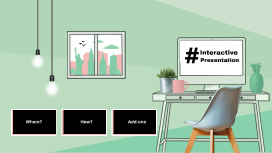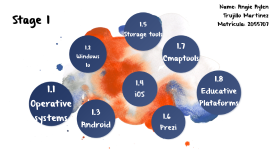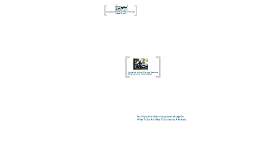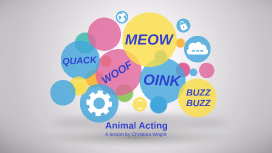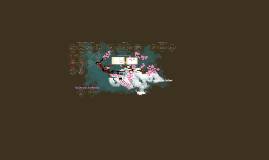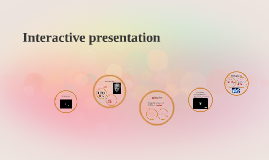Interactive Presentation
Transcript: The requirement for the assignment is to create a multimedia product that is aimed at entertaining and/or educating audiences of small children. With this in mind, the product is to be created with the following purposes: - To entertain the viewers who are primarily small children and any other users who wish to utilise the multimedia product. - To educate the viewers about the issue of high school bullying and how to effectively deal with this issue. In order to identify the needs of the new systems, the purposes of the system are considered: - To entertain the viewers: In order for the product to be entertaining, it needs to be able to effectively engage the audience, which in this case are primarily small children. This may be achieved using various filming and editing techniques that are discussed in the following section. - To educate the viewers about the issue of high school bullying: As the purpose is to “educate” and audience composed mainly of small children, the information must be provided in a way that is clear and easy to understand. The ways in which this need is to be achieved are also discussed in the following section. - As a digital multimedia product, the quality of the system must also meet the general modern standards. The video and sound must be of high quality to be suitable for viewing purposes. - A timeframe restriction was placed (1:30 minutes to 2 minutes). The file size threshold is also set at 100MB. The product’s runtime must satisfy this timeframe and its size must not exceed 100MB. - Various elements are going to be included in the creation of the multimedia product in order to engage the audience. For instance, the use of music would help in creating an atmosphere and attracts that audience’s attention. Humour is another technique that would be utilised to further engage the viewers. Smaller elements, such as the use of “emoticon” in captioning and special sound effects would be used to help creating humorous situations. Colloquial and informal language are going to be used during the intro, transitions and dialogue instead of formal language to help the younger audience relate and further engaging them. - To educate the audience, the product would feature a story, which contains multiple scenarios, anecdotes and cueing texts relating to the subject of bullying and how to deal with the issue. A storyboard is to be created in order to effectively apply these elements to the multimedia product. As the audience are primarily small children, no profanity or excessive violence are to be included in the production of the video. The story would be delivered in the form of video, sounds and on-screen texts. - To deliver a high-quality live-action multimedia product, multiple hardware and software are required. Details and justifications for these devices are included in later sections. - In order for the product to satisfy the timeframe and file size, trimming and editing techniques would likely to be required. Careful planning and timing would be taken to ensure that the runtime would not under-achieve or overly-excess the timeframe. Participants who actively develop and contribute to the production of the multimedia product include: - David Ifield: Actor and screenwriter. - Nicolas McKay: Actor and cameraman. - Sue Crowe: Actor and screenwriter. - Nhat Anh Nguyen: Actor, director, screenwriter, story design, editor, publisher, general project manager. All of these participants are vital to the production of the stand-alone multimedia product. Their decisions and choices have a profound impact on not only the quality of the final product, but also various other factors that relate to the multimedia product, such as distribution. For instance, due to privacy issue, the participants may not wish to have the multimedia product which contains their names and images distributed over the internet. On a boarder range, when talking about distribution, distributors such as YouTube would also be considered as participants. They do not participate on the process of creating the multimedia itself. They, however, are responsible for the storing and broadcasting of the product to the audience and therefore are vital to achieve the purposes of the product. Many distributors have restrictions placed on the types of contents uploaded to their sites and/or the sizes of the contents being uploaded and this would have an impact on the creation of the multimedia product itself (should the publisher decided to utilise these distributors). Therefore, it can be said that the distributors are also participants to the multimedia project, of course only on the aspects of distribution and communication. Data and Information The process of producing the multimedia product utilises many forms of digital media and technologies. This means that almost every piece of data and information related to this project were created and displayed digitally with the small exception of the storyboard. Storyboard The






